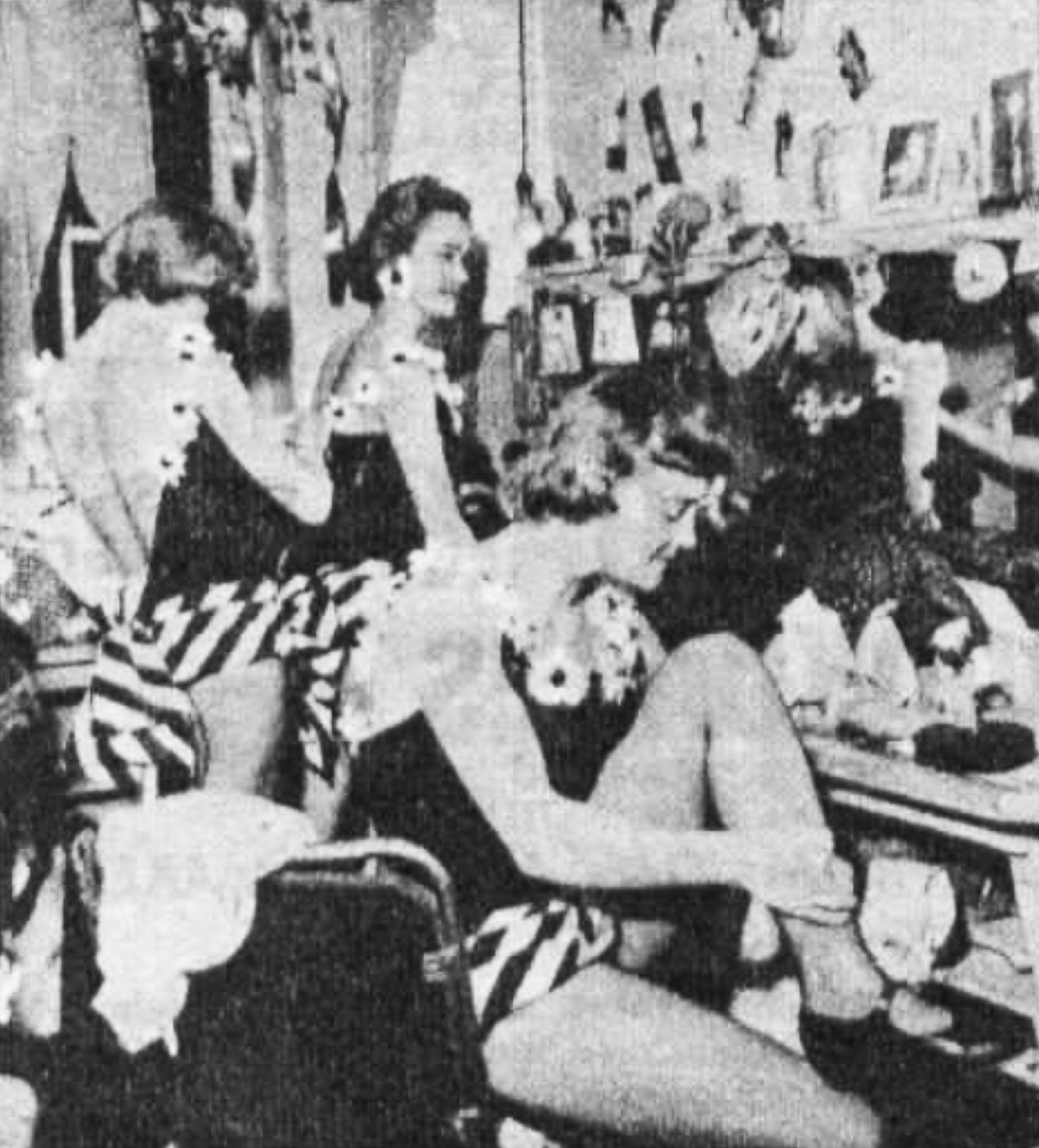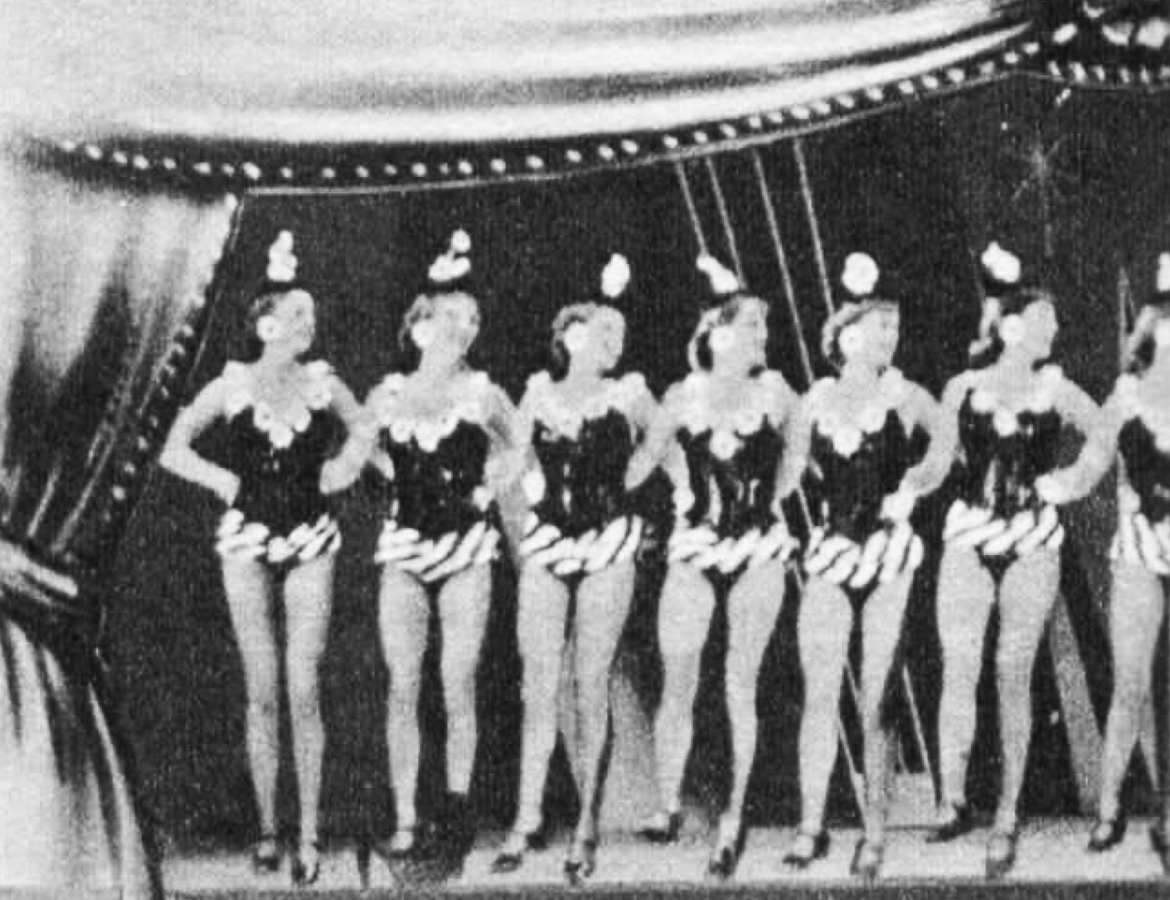The Palladium Show is ‘in the van’
Sunday Night at the London Palladium involves spending Sunday day in a van behind the theatre

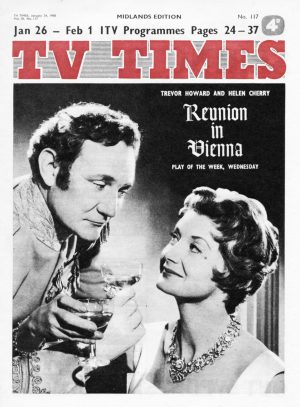
EVERY Sunday morning, soon after dawn, a blue van draws up outside the London Palladium and parks among the debris left over from Saturday night’s fruit-barrows.
The van is the mobile television control room which brings viewers Val Parnell’s Sunday Night at the London Palladium.
“It is all done in the van,” the show’s producer Brian Tesler, told me. “Viewers probably imagine that this great variety show is directed from some mighty control desk. People just would not believe that it is in fact controlled from this van parked in the street!
“Inside the van are my production assistant, the vision engineers, sound engineers, wardrobe and make-up experts, the driver… oh, yes, and I manage to squeeze in somehow.”
This may sound a make-shift arrangement, but it isn’t. This ATV control van, in its smart blue livery, is one of the most up-to-date headquarters of television
equipment. It contains TV and sound equipment valued at about £30,000 [about £565,500 now, allowing for inflation – Ed].
“During the earlier part of the week,” said Brian Tesler, “we get the show into shape in the empty theatre, using every precious hour until they have to set the stage for first house of the Palladium’s normal show.
“On Saturday our night crew go in immediately the curtain is rung down for the end of the second house and work all night rigging the extra lighting, the cameras and cables.
“By the time the van draws up early on Sunday morning, we are ready to link up to the theatre.”

Tesler, who has an Oxford first class honours degree, has a tidy mind, and great organising ability. At his elbow all the time is his production assistant – blonde, quick-witted Audrey Maclean.
“Here’s how the time-table goes for the rest of the day, in and out of the van,” said Tesler:
10.0: Try to commandeer one of the Palladium dressing-rooms for our personal gear. There are about 150 people back-stage today.
10.10: Go around chatting to all the artists in the show, listening to their numbers and discussing any special effects.
11.0: Band-call. Cyril Ornadel and the 25 members of the London Palladium Orchestra. Audrey is busy with her battery of stop-watches while we listen to the music, time it, and run through some of the numbers several times to make cuts.
1.0: Val Parnell entertains us to lunch. Around the table usually are Charles Henry (Production Chief of Moss Empires), dance director George Carden, Cyril Ornadel, Audrey and myself.
2.15: Rehearsal with cameras. Now we are out in the van, watching on the TV screens for the first time. I have a mike in front linked through loud-speakers and head-phones to all key people inside the Palladium.
We use Outside Broadcast equipment in the van, and on this the cameramen themselves also have microphones and can speak back to the producer. I sit in the centre of the control desk at the rear of the van. On one side is the vision mixer, on the other the sound mixer.
We watch the monitor screens up front, with a radio engineer in charge of each. Behind us are other technicians at their switches. I relay comments to the people inside the Palladium, and Audrey gives instructions about running order and timing.
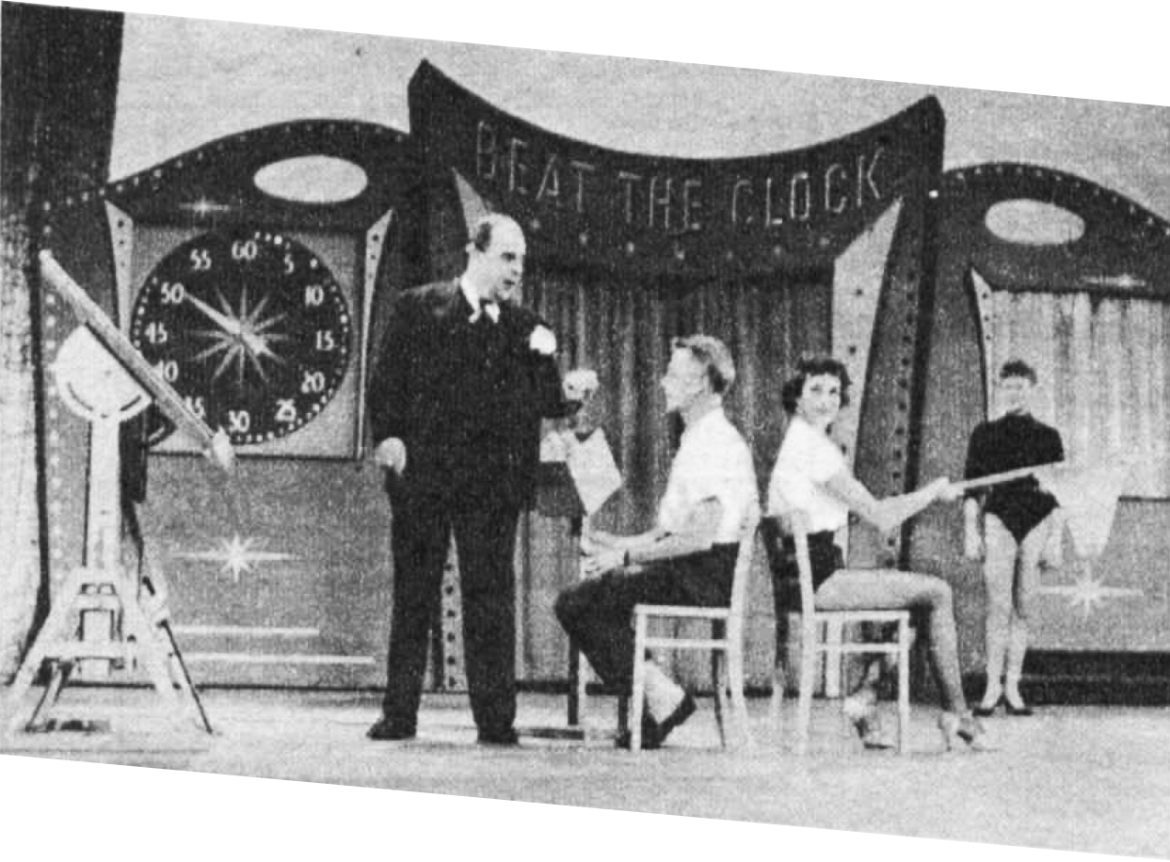
The van is a maze of wiring, for in addition to the monitor TV screens that link with each camera in the building, there are two separate screens, known as radio-check monitors, enabling us to see how the show is coming over the air.

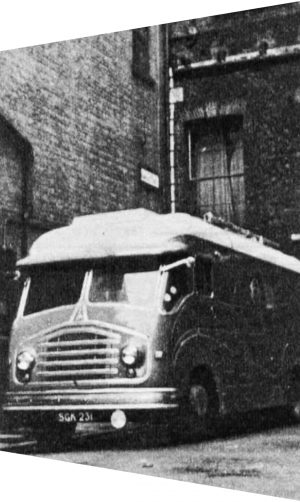
4.30: Back from the van to the Palladium, break for tea.
4.35: Talk during tea-break with the dance director and others who have been too busy for conference. Then back to the van.
5.0: Complete run-through with band.
6.0: Now is the time to make any last-minute changes. During the run-through, I may spend part of the time in the van, or part at the production desk in the Palladium. This is a position next to the two cameras mounted in the stalls.
6.30: A round of the dressing-rooms to wish the artists good luck.
7.15: The audience, which has been queueing in the street, begins filing in.
7.30: The house-lights are on, and I go on stage and begin the “warm-up warm-up” with whoever happens to be compering the show. The clock ticks on towards 8pm. I dash back to the van, take my seat at the controls, and there is a momentary hush in the babble as Audrey begins counting the seconds… “Ten… nine… eight – three… two… one…” SOUND ON. VISION ON. We’re on the air!
9.0: Moment of elation. But no time for celebration. I go back-stage again to the dressing-rooms and thank all the artists. The engineers and stage-hands attack the Palladium, knocking down the scenery, wheeling out the cameras.
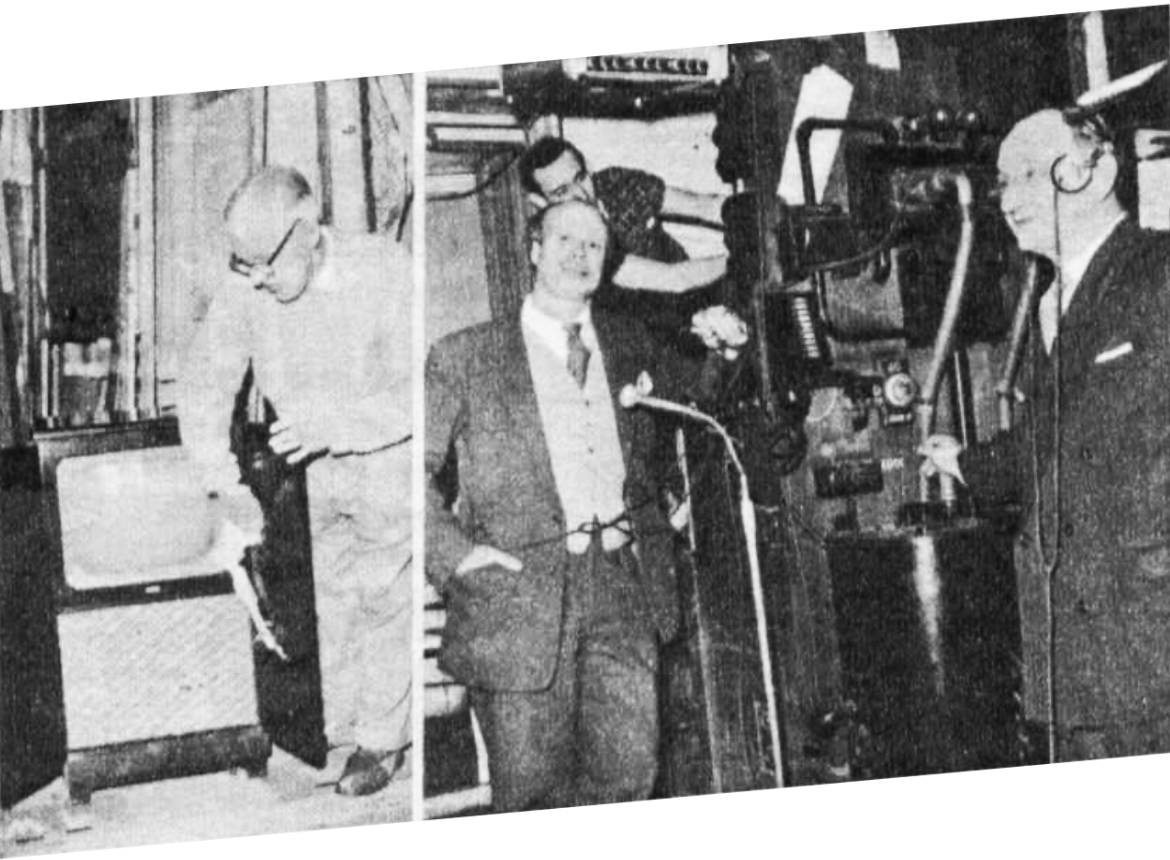
And then, around midnight, the blue van drives away… until early next Sunday morning.
About the author
Charles Gretton wrote for the TVTimes

